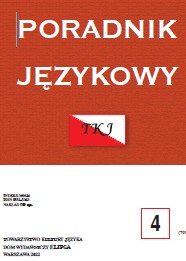OD PODEJŚCIA KOMUNIKACYJNEGO DO PODEJŚCIA UKIERUNKOWANEGO NA DZIAŁANIE. UWAGI NA MARGINESIE DYDAKTYKI I METODYKI NAUCZANIA JĘZYKA POLSKIEGO JAKO OBCEGO I DRUGIEGO
FROM THE COMMUNICATIVE APPROACH TO THE ACTION-ORIENTED ONE. SIDE NOTES ON DYDAKTYKA I METODYKA NAUCZANIA JĘZYKA POLSKIEGO JAKO OBCEGO I DRUGIEGO (DIDACTICS AND METHODOLOGY OF TEACHING POLISH AS A FOREIGN AND SECOND LANGUAGE)
Author(s): Małgorzata BanachContributor(s): Monika Czarnecka (Translator)
Subject(s): Foreign languages learning, Language acquisition, Western Slavic Languages, Methodology and research technology, Pedagogy
Published by: Dom Wydawniczy ELIPSA
Keywords: Polish as a foreign and second language; Polish glottodidactics; didactics; methodology; communicative approach; action-oriented approach;
Summary/Abstract: Part one of this paper is a brief description of the contemporary changes in the teaching of foreign languages related to the CEFR and CEFR/CV publication and the birth of the action-oriented approach and influence of the European language policy on teaching Polish to foreigners in the 21st c. Part two discusses the genesis and concept of a textbook promoting the action-oriented approach, i.e. Dydaktyka i metodyka nauczania języka polskiego jako obcego i drugiego (Didactics and methodology of teaching Polish as a foreign and second language) (Warszawa 2020) by P. Gębal and W. Miodunka. This part synthetically describes the main topics covered in the book, such as: the place of didactics and methodology of teaching Polish as a foreign and second language within Polish glottodidactics, traditions and contemporary problems of such teaching, Polish language didactics across the world, its promotion and language policy, teaching of Polish as a second language and the latest directions in foreign language didactics, methodology of developing linguistic competences and language activities, teaching of Polish culture, the use of new technologies in teaching Polish, planning of the course and classes, and language assessment. Part three of the paper presents the comments inspired by the reading of P. Gębal and W. Miodunka’s publication.
Journal: Poradnik Językowy
- Issue Year: 2022
- Issue No: 04
- Page Range: 21-38
- Page Count: 18
- Language: Polish
- Content File-PDF

